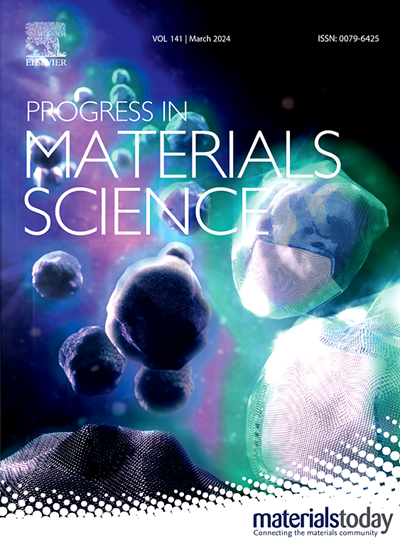Emerging innovations in rubbery polymeric membranes for CO2 separation: A review
IF 40
1区 材料科学
Q1 MATERIALS SCIENCE, MULTIDISCIPLINARY
引用次数: 0
Abstract
Membrane separation technology is gaining increasing prominence, particularly for CO2 removal in natural gas upgrading and flue gas treatment. Rubbery polymers feature soft, flexible segments that allow unrestricted rotation around the main chain, exhibit molecular flexibility that increases fractional free volume, leading to enhanced gas permeability. This review provides a comprehensive summary of recent innovations in state-of-the-art rubbery polymers for high-performance CO2 separation membranes, which are advancing this technology toward its theoretical limits, with a focus on developments over the past five years. It emphasizes polymer modifications such as blending, cross-linking, and surface functionalization. Although these strategies remain underexplored, promising results have emerged in CO2-selective mixed matrix membranes incorporating fillers such as Zeolitic Imidazolate Frameworks (ZIFs), University of Oslo (UiOs), Materials of Institute Lavoisier (MILs), emerging MOF-based and 2D fillers. The common challenges associated with 2D and 3D-based fillers have been systematically summarized. Additionally, the scalability of these technologies from flat sheet to thin film composite hollow fiber membranes which provides energy efficiency suitable for large-scale integration have been discussed. In conclusion, this review identifies key research gaps and future directions to drive innovation in rubbery polymer membranes for CO2 capture.

用于CO2分离的橡胶聚合物膜的新兴创新:综述
膜分离技术越来越受到重视,特别是在天然气升级和烟气处理中的CO2去除方面。橡胶聚合物的特点是柔软、灵活的片段,允许围绕主链不受限制地旋转,表现出分子的灵活性,增加了自由体积的分数,从而提高了气体的渗透性。本文综述了用于高性能CO2分离膜的最先进的橡胶聚合物的最新创新,这些创新正在将该技术推向其理论极限,重点介绍了过去五年的发展。它强调聚合物的改性,如共混、交联和表面功能化。尽管这些策略仍未得到充分的探索,但在二氧化碳选择性混合基质膜中已经出现了有希望的结果,这些混合基质膜包含填料,如沸石咪唑盐框架(ZIFs)、奥斯陆大学(UiOs)、拉瓦锡材料研究所(MILs)、新兴的mof基和2D填料。本文系统地总结了与2D和3d填充剂相关的常见挑战。此外,还讨论了这些技术的可扩展性,从平板到薄膜复合中空纤维膜,提供适合大规模集成的能源效率。总之,本综述确定了关键的研究空白和未来的方向,以推动橡胶聚合物膜的二氧化碳捕获创新。
本文章由计算机程序翻译,如有差异,请以英文原文为准。
求助全文
约1分钟内获得全文
求助全文
来源期刊

Progress in Materials Science
工程技术-材料科学:综合
CiteScore
59.60
自引率
0.80%
发文量
101
审稿时长
11.4 months
期刊介绍:
Progress in Materials Science is a journal that publishes authoritative and critical reviews of recent advances in the science of materials. The focus of the journal is on the fundamental aspects of materials science, particularly those concerning microstructure and nanostructure and their relationship to properties. Emphasis is also placed on the thermodynamics, kinetics, mechanisms, and modeling of processes within materials, as well as the understanding of material properties in engineering and other applications.
The journal welcomes reviews from authors who are active leaders in the field of materials science and have a strong scientific track record. Materials of interest include metallic, ceramic, polymeric, biological, medical, and composite materials in all forms.
Manuscripts submitted to Progress in Materials Science are generally longer than those found in other research journals. While the focus is on invited reviews, interested authors may submit a proposal for consideration. Non-invited manuscripts are required to be preceded by the submission of a proposal. Authors publishing in Progress in Materials Science have the option to publish their research via subscription or open access. Open access publication requires the author or research funder to meet a publication fee (APC).
Abstracting and indexing services for Progress in Materials Science include Current Contents, Science Citation Index Expanded, Materials Science Citation Index, Chemical Abstracts, Engineering Index, INSPEC, and Scopus.
 求助内容:
求助内容: 应助结果提醒方式:
应助结果提醒方式:


